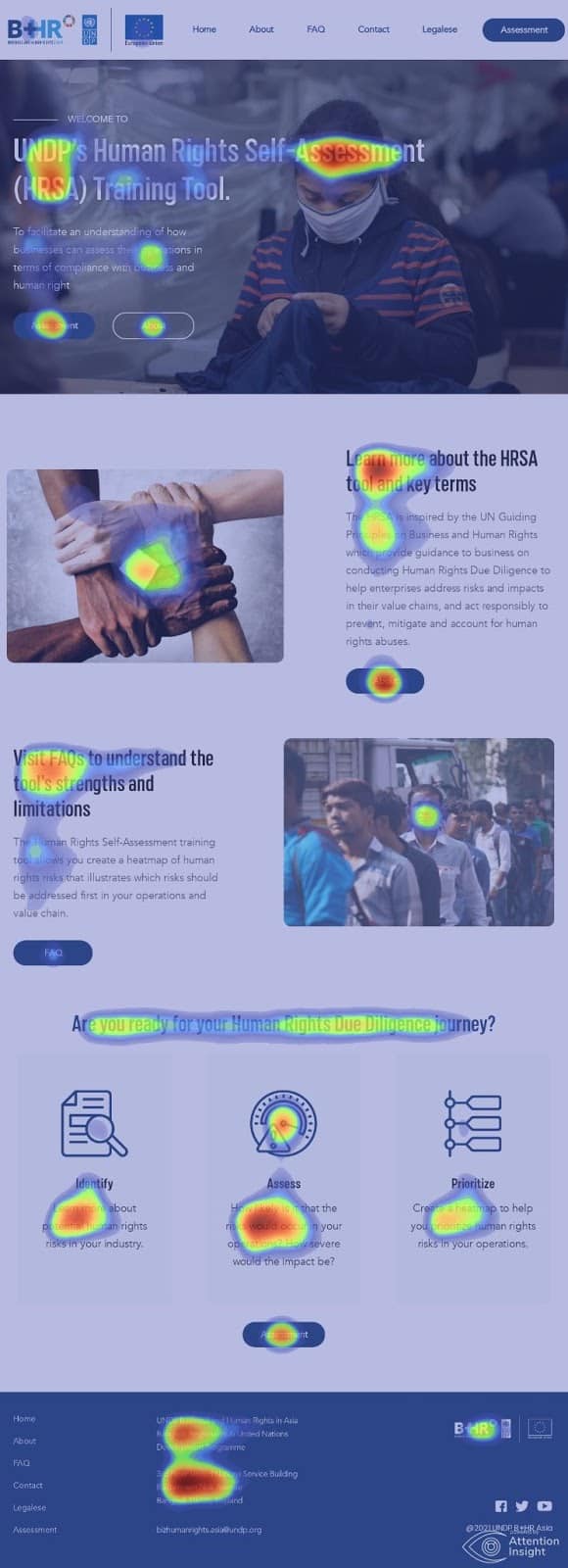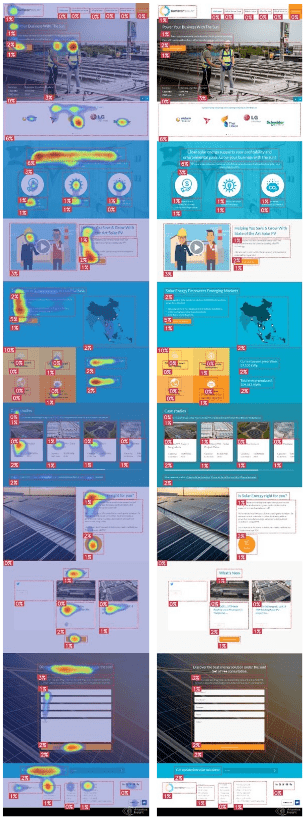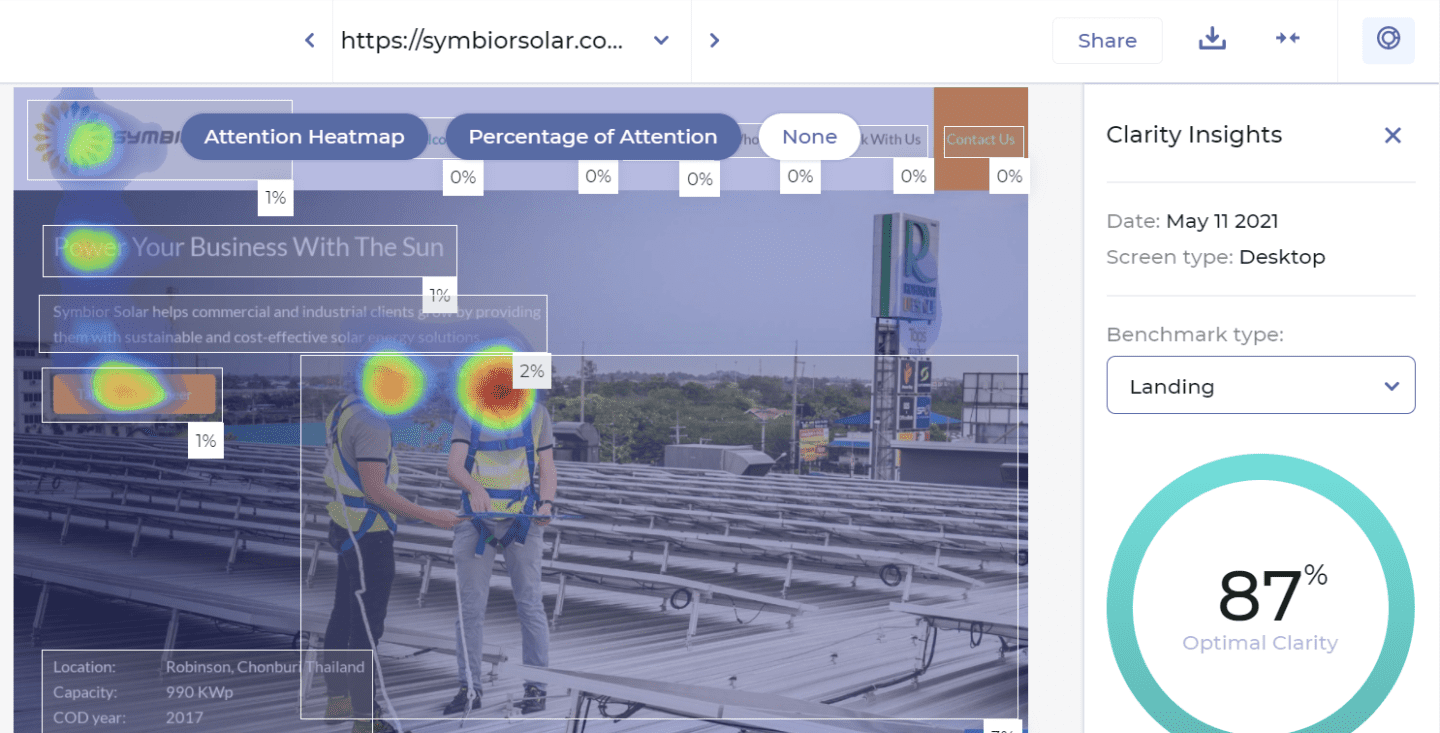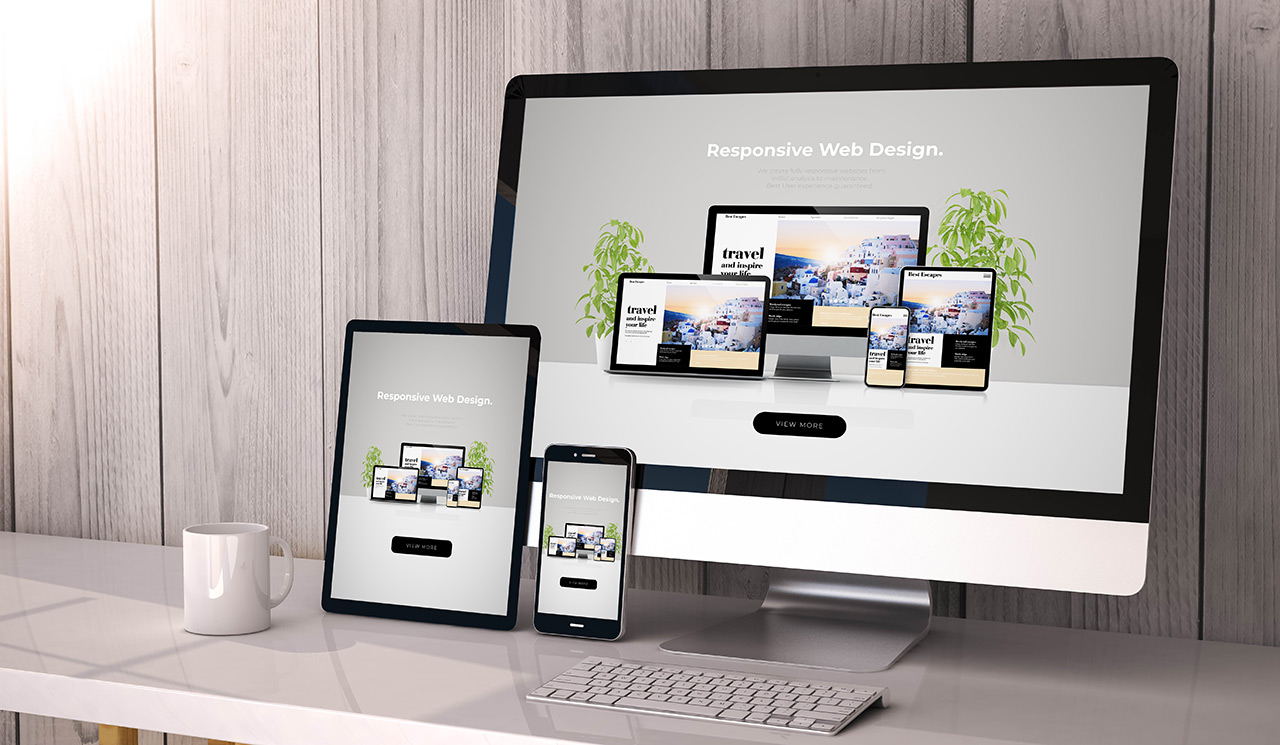Predictive Eye-Tracking – Video summary
For the full article scroll below.
Wouldn’t it be great if you could combine behavioral design insights with an artificial intelligence agent to create better B2B web design? Attention Insight is a brilliant application that does just that. We’ve started using this tool to validate designs for our clients, and we’re so impressed with the results, we’d like to share with you how this technology works, why you should include it in your website development strategy, and how you can best maximize the benefits it offers.
What is Attention Insight?
Attention Insight is a predictive eye-tracking platform that creates a visual representation of how eye-catching different elements of a graphic layout design are. We use this powerful tool because it helps us see which parts of an app, website or ad campaign design will catch a viewer or users’ attention, and how their eyes might explore the design once they see it.
What can be measured?
The Attention Insight artificial intelligence (AI) measures how attention is captured in several different ways. It works with any graphic, website or app screen layout, and processes both desktop and mobile form factors. Below are some of the different insights the platform provides.
Attention Heatmaps
Attention heatmaps use colors to visually represent the AI data and show you which parts of your design are the most eye-catching. The heatmaps show data using a color scale where warm colors like red and orange mark areas that draw a lot of attention and cooler colors mark areas that are less striking to a viewer. Below is an example heatmap from the Human Rights Due Diligence assessment and training website that Vimi assisted in creating for the United Nations Development Programme.

hrdd-assessment.org, accessed 24 May, 2021
Video Heatmaps
In addition to heatmap information for your images or website designs, Attention Insight can also provide heatmaps of videos upon request. The heatmap will simply be applied to the video, so there is no need to upload frame-by-frame, just watch the heatmap change as the video runs and see where your viewers’ attention will be drawn.
Percentage of Attention
In addition to heatmaps, you can also select specific areas of interest (AOI) within your image and test them to learn the percentage of attention the item receives within a given layout.
It shows the data measured by the heatmaps, and adds precise numeric data about particular objects, such as a selected section of text or a call-to-action (CTA) button. Below you can see an example of percentage of attention calculations both over a heatmap (left) and on their own (right) for the Symbior Solar website that Vimi designed and developed.

hrdd-assessment.org, accessed 24 May, 2021
Automatic Percentage of Attention
An amazing advantage to using Attention Insight’s algorithm is that it automatically recognizes CTA buttons and calculates the percentage of attention they receive.
Clarity Score
The clarity score of your image or website shows how clear the design is for a new user. This evaluation takes into account how cluttered the design is, and whether it has conflicting colors. The resulting percentage score describes how clean and clear the layout is.
Attention Insight uses Alexa’s Sites Ranking, which includes a group of the top 170 Alexa websites, to give you a comparative clarity score for your website. This is useful for checking how you’re doing related to your competitors’ websites. Below is a view of the clarity score within the Attention Insight platform for the Symbior Solar website in the previous example.

How it Works
Attention Insight’s technology is based on deep learning, a type of machine learning which uses artificial neural networks (ANN). Essentially, ANN are computing systems designed to mimic the human brain and how it processes information. They are a foundation of artificial intelligence (AI), which are able to learn independently from data that they are presented with and solve problems that would be difficult or even impossible for a human mind to solve.
Attention Insight’s AI was trained using eye tracking data showing where people’s eyes were drawn to when viewing images. This initial data set was then leveraged to create an algorithm for predicting which parts of a given image will draw attention.
This algorithm now simulates real human vision maps with 90-94% accuracy—a score determined through comparison to the Massachusetts Institute of Technology (MIT) data set of images with eye tracking data.
Here are some interesting statistics about the technology behind Attention Insight:
- The Attention Insight AI was trained with 30,800 images from eye-tracking studies
- The algorithm is 90% accurate for web designs
- The algorithm is 94% accurate for other images
- Attention Insight has analyzed 4,000 designs
- The AI can give you a result in just 60 seconds
How AI and Machine Learning bring Cognitive Science into Design
Attention Insight is a great example of how developments in cognitive science are being brought into the world of design to create data-based marketing content. AI and machine learning are allowing marketers to respond to changing customer needs and respond to problems quicker and with increasing accuracy. In 2020, 41% of marketers using AI said that the main outcome it contributed to was accelerating revenue. A majority of marketers said they believed incorporating AI and machine learning will be important or critical for their success in 2021.
You can explore more about how AI is affecting eCommerce in one of our earlier blog posts.
Psychophysics and design
Applications like Attention Insight are able to connect the visual stimuli of a given design with how they will be perceived by the human mind thanks to the research of psychophysicists.
Psychophysics is the scientific study of the relationship between a physical stimulus and the perceptions or sensations it produces. One of the primary goals for this area of research is to objectively quantify sensations – in essence to be able to define how powerful a given stimulus is, in a way that’s not subjectively relevant to a single person, but is applicable to the experiences of the many.
Experiments in psychophysics are among the earliest psychological studies conducted, and have tested all human senses:
- How we hear different sounds.
- How we feel pain and other physical sensations.
- How we perceive different images and layouts.
- How we taste different flavor intensities.
- Etc.
By collecting data about how a variety of stimuli are experienced by an extensive dataset of people, scientists are now able to predict rather accurately how similar stimuli will be experienced in the future. Stanley Smith Stevens, one of the pioneers of this science, developed a formula to predict human perceptions of different stimuli decades ago, and his work remains at the core of empirically grounded marketing campaigns.
Attention in the brain
Understanding how the human brain pays attention, and what it tends to pay attention to, is another key facet of Attention Insight’s technology. When a graphic layout grabs your attention, it is initially stored as an iconic memory, a type of short lived sensory imprint, from there it is passed on to your working memory – a type of short-term memory you use for processing your present experiences as they unfold. One example of your working memory in action is your ability to read this sentence, and retain it in memory long enough, so that you can understand what it means.
Our working memory is a critical junction for both attention and data retention. The most widely accepted theory of how we’re able to process the visual stimuli around us suggests that
color, direction, shape and contrast are all processed individually in working memory processes governed by the firing of specific sets of neurons at set frequencies. These disparate features are then bound together to create our experience. I imagine this process as being somewhat like playing a guitar where harmonies are created by vibrating sets of chords at fixed frequencies.
The two-step process of perception and binding is near instantaneous, but demands processing power, and at times when we’re taxed for attention, it can account for some interesting errors.
Having a good understanding of the particulars of vision, attention, and memory, provides a huge advantage for creating marketing content.
The key is to be relevant enough to your audience so as to warrant the attention needed to get into their working memory. We must then be striking enough to bind properly and actually be seen. Finally we must be memorable enough to get passed on from working memory, which only has a lifespan of about 15 seconds, to long-term memory, which accounts for everything else. Once we’ve made it into long-term memory, we actually have a chance our message will be recalled at some future date.
The best messages are crafted so as to be remembered at the RIGHT future time.
Why you need to use Attention Insight
What are the benefits?
Using Attention Insight and its eye-tracking simulation technology is a great way to give your marketing presence a competitive edge by putting your best designs forward. This innovative tool allows you to measure the effectiveness of your designs before publishing and gives you AB testing insights without the need for live traffic or large sample sizes. This incredible tool takes the trial and error out of the marketing process and helps you publish effective designs the first time around.
Compare Multiple Designs
The AI technology allows you to not only evaluate designs, but to compare multiple designs and see which one will draw the most attention to the areas you want customers to remember. This allows you to make data-based decisions about the best way to present your company.
Scope out the Competition
Additionally, with Attention Insight you can analyze competitors’ sites to see how your designs look in comparison. This gives you direct data about how other companies in your field are approaching their marketing and how you can counter with your own unique, insightful designs.
Turn your Attention to Attention Insight
When you’re looking to stand out in an increasingly competitive market, you need the best resources at your disposal. Ground-breaking technologies and tools like Attention Insight are at the forefront of marketing innovation. They effectively leverage insights from cognitive and behavioral psychology to add efficiency to your marketing process by allowing you to know exactly how customers will perceive your interfaces and messaging.
With Attention Insight, you can make confident, data-driven marketing decisions that will improve your KPIs and give you an edge over the competition. Talk to us today about integrating this tool, and the methodology it supports, into your organization’s projects.


